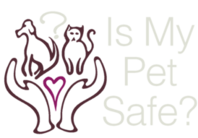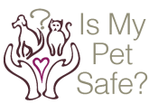Is My Pet Safe? Maybe not for you
Pets, as a general rule, do not transfer diseases to humans, though earlier we covered one example, brucellosis Other exceptions include a number of "worms" that are communicable, as well as campylobacteriosis, E. coli and Salmonella. Today another is added to the list: mcr-1–harboring E. coli

Background
Possible Transmission of mcr-1–Harboring Escherichia coli between Companion Animals and Human appears in the September edition of the journal Emerging Infections Diseases. It is an account by Chinese researchers of a pet shop worker who was infected by mcr-1–harboring E. coli as a result of contact with pets in his store. To confirm this, 39 dogs and 14 cats from the pet shop were tested and six (four dogs, two cats) came back positive for mcr-1–harboring E. coli.
Right now you are asking what exactly is this mcr-1 thing. Mcr-1 is a gene identified only recently and found for the first time in the US this past May. As NBC news reports,
Mcr-1 is found on a little piece of DNA called a plasmid, which bacteria can pass very easily from one to another. Plasmids can even be passed between species — a kind of interspecies bacterial sex. ... In this case the load is a gene that gives bacteria the ability to survive treatment with an important antibiotic. Bacteria are already able to mutate at a blinding rate, but plasmids provide an extra shortcut to mutation.
What is so troublesome about mcr-1 is that it makes bacteria resistant to an antibiotic called colistin. Colistin is a rarely used, very powerful drug that can cause kidney damage (nephrotoxic) and is only available as an injectable.
However, colistin is also the only known treatment against "superbugs," such as CRE. Once in the bloodstream, CRE (carbapenem-resistant enterobacteriaceae) results in death, on average, for 50% of its victims. In early 2015, eight patients at UCLA Medical Center were infected with CRE and three died. The case in China involved colistin-resistant E. coli that were also resistant to at least five other medications.
Scientists think that mcr-1 has been around for a much longer time than its recent discovery might indicate as there was no specific test that could have identified it. Researchers have now tested older samples from humans and feed animals and found mcr-1 to be present. They believe the transmission route is through contaminated feed animals and that same mechanism is probably how the pets in China were infected.
Analysis
This transmission mechanism should give pause to those pet parents who are feeding their pets raw diets. E. coli infection is already a risk to pets eating raw meat in much the same ways as to humans. Many raw food advocates down play this risk because either their pets have not yet been exposed or they do not personally know of any incidents. Yet, these bacteria often are passed back to other members of the pet household through saliva, touching of fur coats or "shedding" of pathogens and sickness can occur in those with weakened immune systems.
There have been studies that indicate raw foods may be contaminated with many pathogens, including listeria and E. coli. One study completed in 2008 showed E. coli present in 78% of the raw fed dogs compared to 20% of those fed cooked foods. The American Veterinary Medical Association (AVMA) actively discourages pet parents from feeding cats and dogs raw animal meats.
This is not to say processed pet foods are never contaminated in our increasingly complex food preparation chain. They are, though the rate is low considering the quantities of food made.
Pet parents who believe the benefits of a raw diet outweigh the risks must exercise more vigilance in their storage and handling of raw meats. The emergence of mcr-1–harboring E. coli presents a new level of risk that makes such errors potentially life threatening.
There are many guides on the internet that are great starting points to learn best practices and procedures. In addition, recent studies have shown that pasture raised feed animals have lower incidents of E. coli and other pathogens as compared to traditional commercially raised animals.


